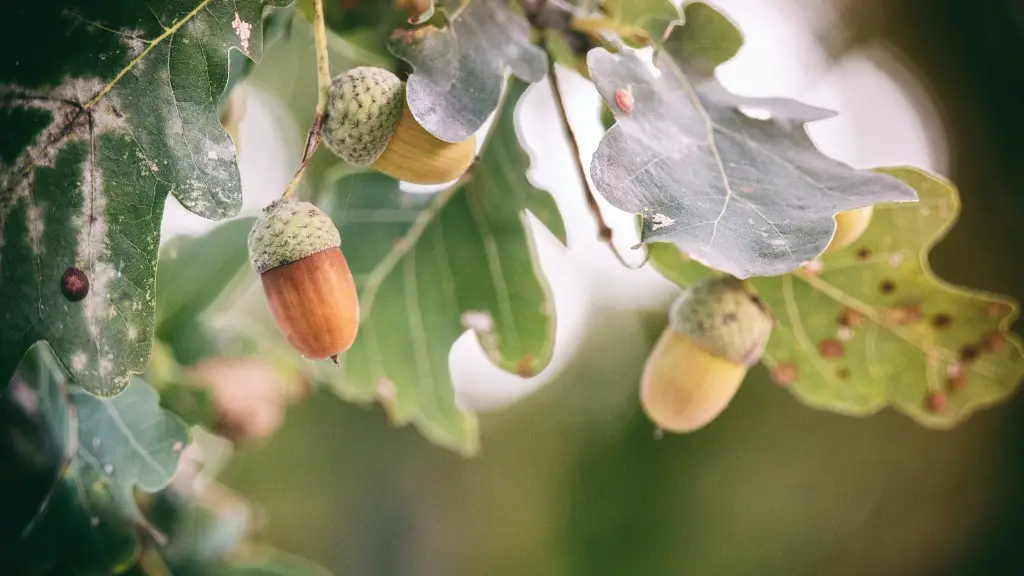Lemon trees are some of the most productive fruit trees in existence. Generally, each lemon tree will produce anywhere from 75 to 200 lemons per season, depending on various factors. One of the most important factors is water availability. Lemon trees require regular watering to stay healthy and yield enough fruit. A lack of moisture can significantly reduce the number of lemons produced by the tree.
The amount of sunlight is also an essential factor in lemon tree production. At least 8 hours of direct sunlight is needed to produce an optimal amount of lemons on the tree. Lemon trees will also produce healthier and better-tasting fruit when they are exposed to enough sunlight.
Pruning plays a huge role in the number of lemons produced by the tree. Pruning the tree properly helps increase air circulation, allowing the leaves to get enough of the sunlight and access to water. Pruning is also vital for removing dead and damaged branches, which can help the tree stay healthy and keep producing fruit.
The type of soil in which the lemon tree is planted plays an important part in its ability to produce lemons. To keep a lemon tree healthy and productive, the soil must be well-drained, fertile, and at least mildly acidic (in the range of 6.0 to 7.3).
The age of the lemon tree is also important. A lemon tree will usually not produce fruit until it is at least four or five years old, so patience is definitely key when it comes to producing lemons. Once a lemon tree reaches mature age, it can produce enough lemons to sustain itself and provide some extra for harvesting.
The overall health and environmental conditions of the lemon tree can drastically increase the number of lemons it produces. Therefore, it is essential to provide the right conditions for a lemon tree to be able to achieve its maximum yield, which can be anywhere from 75 to 200 lemons.
The Effect of Pollination on Lemon Yields
Pollination is an important factor when it comes to a lemon tree’s productivity. Non-pollinated lemon flowers will usually not develop into lemons, so having a source of pollinators is necessary for a strong lemon yield.
These pollinators can come in the form of bees, birds, or other insects, and they are essential for the lemon tree’s successful reproduction and fruit production. Without the pollinators, the number of lemons produced by the tree will be significantly lower.
The size and quantity of the lemons can also be affected by pollination. Pollinated lemon trees will usually produce larger and thicker-skinned lemons compared to non-pollinated trees. This can make the lemons easier to harvest and allow them to keep for longer periods of time.
In addition to making the lemons larger and easier to harvest, pollination can also help the tree produce more lemons. Pollinated lemon trees usually have higher yields of lemons compared to those that don’t have pollinators. This can make a huge difference in the amount of lemons the tree produces, especially in years when there is not enough water or sunlight.
Therefore, it is essential to provide adequate pollinators for a lemon tree to ensure it produces the maximum number of lemons. If pollination is done correctly, a lemon tree can produce anywhere from 75 to 200 lemons per season.
Preserving Lemon Harvest
After harvesting lemons, the key to preserving them lies in proper storage. Lemon trees can produce a lot of lemons, so having an effective method of storage is essential.
One of the simplest and most effective ways to store lemons is in the refrigerator. Lemons can usually last for up to two weeks if stored properly in the refrigerator in an airtight container. If you don’t have a refrigerator, lemons can be stored in a cool and dry place.
It is also important to avoid exposure to direct sunlight, which can cause the lemons to deteriorate quickly. If you have too many lemons and need to store them for longer periods of time, you can freeze them.
Another option for preserving lemons is by preserving them in syrup. Lemons can be preserved this way for up to six months if stored in airtight jars. This method is ideal for lemons that are too ripe to be eaten fresh.
Finally, lemons can also be pickled or made into preserves or marmalade. Pickling can extend the life of the lemons to up to eight months, while preserves and marmalade can last for up to a year.
Overall, a lemon tree can produce anywhere from 75 to 200 lemons each year, depending on various factors. The best way to preserve the lemon harvest is to store them in the refrigerator or freeze them. Additionally, preserving lemons in syrup, pickling them, or making preserves and marmalade are also great ways to keep them for longer periods of time.
Protecting Lemon Trees From Pests
The key to having a productive lemon tree is to protect it from pests. Pests can significantly reduce the number of lemons produced by the tree, so it is important to make sure that the tree is well-protected at all times.
One of the most effective ways to protect the tree from pests is to prune it regularly. Pruning helps open up the canopy of the tree, allowing for more airflow and better circulation of water and nutrients. This will help keep the tree healthy and reduce the presence of pests.
Using pest control products can also help keep pests away from the tree. Products such as insecticides, fungicides, and herbicides can help keep the tree free from pests. It’s also important to remove any infected leaves or branches as soon as possible to ensure the health of the tree.
In addition, it is essential to provide proper care for the lemon tree. Providing adequate water and fertilizing regularly will help keep the tree healthy and increase its productivity. Additionally, ensuring the tree gets enough sunlight and pruning it correctly will help with pest prevention.
Finally, it is important to keep the area surrounding the tree clean. Trimming the grass and removing any debris or leaves that might attract pests is essential for the tree’s health and productivity.
Overall, it is essential to protect the lemon tree from pests to ensure that it produces enough lemons. Pruning, pest control products, proper care, and keeping the area around the tree clean can help prevent pest infestation and keep the tree healthy and productive.
Harvesting Lemon Yields
Harvesting lemons from the tree is a rewarding experience and is relatively easy. The best time to harvest lemons is when the fruit is ripe and still green in color. If the fruit turns yellow, it might be too late to harvest.
The best way to harvest a lemon is to cut the stem where it attaches to the branch, twist the fruit gently, and then pull it off. It’s important to be gentle when harvesting, as too much force can damage the fruit and the tree.
It’s also important to use the right tools when harvesting. The best tools to use are pruning shears or a knife. Pruning shears are ideal for cutting the stems, while a knife is better for slicing through the thicker and harder stems.
When harvesting lemons, it is essential to be careful and to avoid damaging the tree. Limbs should not be pulled off and branches should not be snapped off in order to prevent damage to the tree. Additionally, lemons should not be picked from the tree by hand, as this can cause damage to the fruit.
Finally, it is important to store the harvested lemons properly. The best way to store them is in the refrigerator in an airtight container. If a refrigerator is not available, lemons can also be stored in a cool and dry place.
Overall, harvesting lemons from the tree is a rewarding experience. It is best to harvest lemons when they are still green in color and use the right tools to avoid damaging the tree. Additionally, the lemons should be stored properly in order to preserve them for longer periods of time.
Replanting Lemon Trees
Replanting a lemon tree is essential for ensuring its continued health and productivity. When a lemon tree lacks the proper water and nutrients, it will eventually start to weaken, making it necessary to replant the tree.
When replanting a lemon tree, the first step is to dig a hole twice as wide and twice as deep as the tree’s root system. It’s important to choose the right spot for the tree and make sure that soil conditions are appropriate for planting.
It is also essential to use the right soil when planting the tree. The soil should be well-draining and slightly acidic (in the range of 6.0 to 7.3). Additionally, the soil should contain enough organic matter to support the tree’s growth.
Finally, it’s important to water the tree regularly and make sure it gets enough sunlight. A lemon tree requires at least 8 hours of direct sunlight each day and needs water at least once each week.
Overall, replanting a lemon tree is essential for its continued health and productivity. Choosing the right spot and soil type, watering it regularly, and ensuring that it gets enough sunlight are all important steps when replanting a lemon tree.





